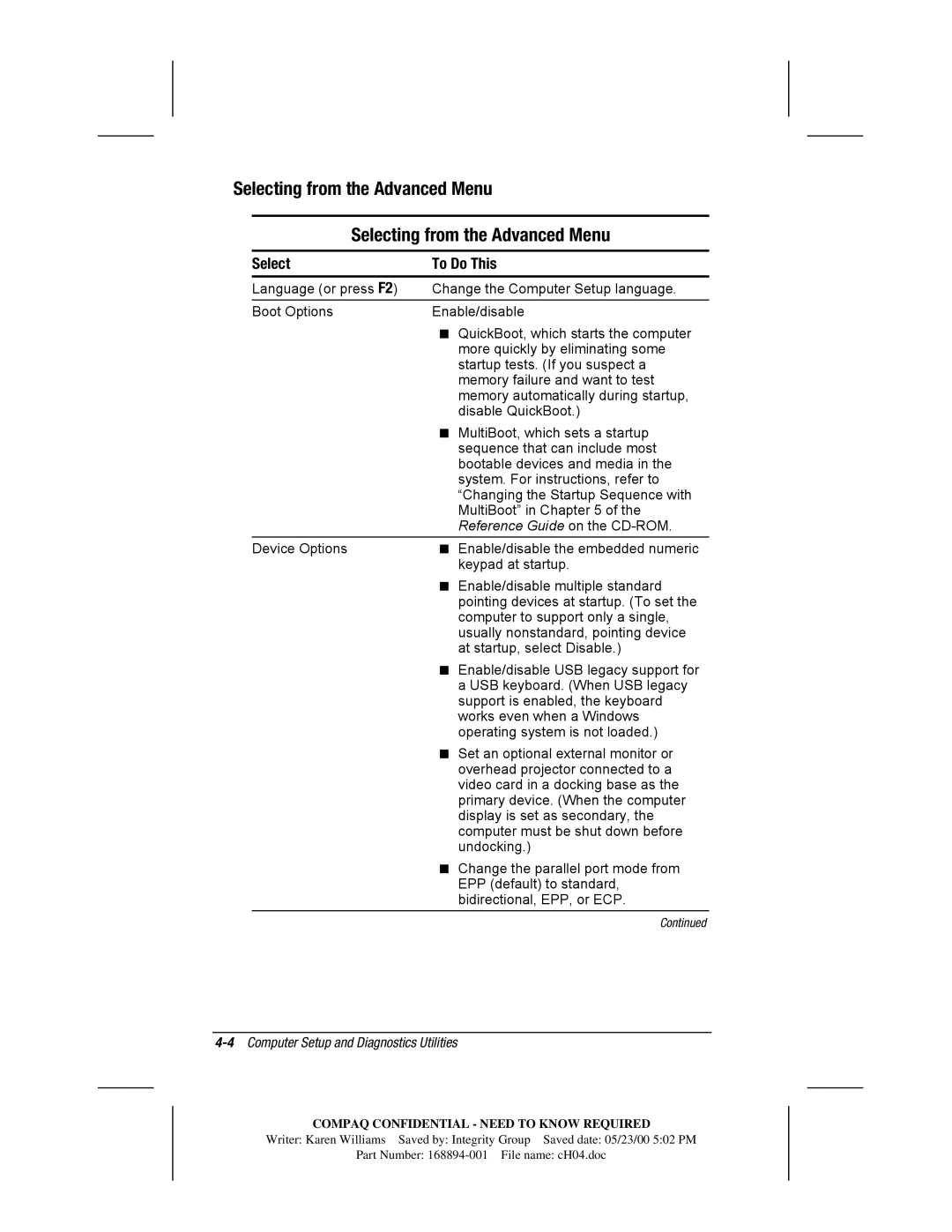
Selecting from the Advanced Menu
Selecting from the Advanced Menu
Select | To Do This |
Language (or press F2) | Change the Computer Setup language. |
|
|
Boot Options | Enable/disable |
| ■ QuickBoot, which starts the computer |
| more quickly by eliminating some |
| startup tests. (If you suspect a |
| memory failure and want to test |
| memory automatically during startup, |
| disable QuickBoot.) |
| ■ MultiBoot, which sets a startup |
| sequence that can include most |
| bootable devices and media in the |
| system. For instructions, refer to |
| “Changing the Startup Sequence with |
| MultiBoot” in Chapter 5 of the |
| Reference Guide on the |
Device Options | ■ Enable/disable the embedded numeric |
| keypad at startup. |
| ■ Enable/disable multiple standard |
| pointing devices at startup. (To set the |
| computer to support only a single, |
| usually nonstandard, pointing device |
| at startup, select Disable.) |
| ■ Enable/disable USB legacy support for |
| a USB keyboard. (When USB legacy |
| support is enabled, the keyboard |
| works even when a Windows |
| operating system is not loaded.) |
| ■ Set an optional external monitor or |
| overhead projector connected to a |
| video card in a docking base as the |
| primary device. (When the computer |
| display is set as secondary, the |
| computer must be shut down before |
| undocking.) |
| ■ Change the parallel port mode from |
| EPP (default) to standard, |
| bidirectional, EPP, or ECP. |
| Continued |
4-4 Computer Setup and Diagnostics Utilities
COMPAQ CONFIDENTIAL - NEED TO KNOW REQUIRED
Writer: Karen Williams Saved by: Integrity Group Saved date: 05/23/00 5:02 PM
Part Number:
